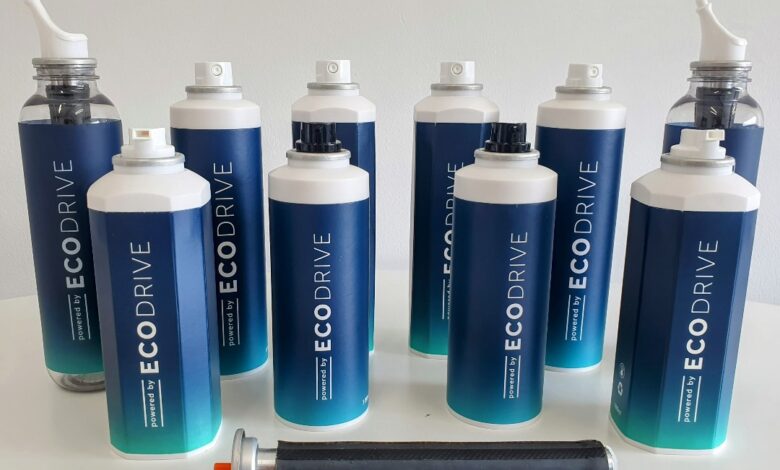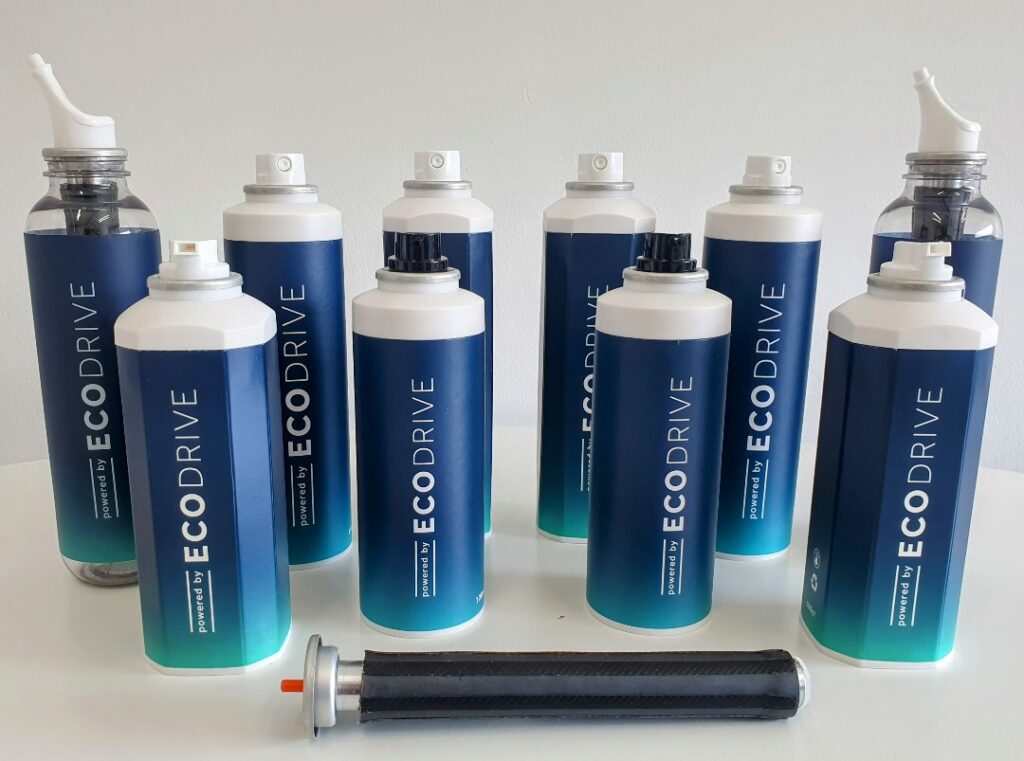The Future of Aerosol: A Shift Towards a Greener Horizon

In an era of heightened environmental consciousness, companies such as GreenSpense in the aerosol industries are undergoing profound transformations—guided by a collective desire to align with sustainability. One such sector—Aerosol continuous dispensing Packaging—stands at the forefront of change, long scrutinized for its ecological impact by using gas to propel the product. In response to mounting concerns, groundbreaking advancements in aerosol packaging are propelling the charge toward a more ecologically conscious future.
Aerosols, colloidal dispersions of liquid or solid particles in a gas, find a diverse range of applications across industries, offering convenient and efficient solutions to various tasks. In the realm of personal care, aerosol sprays are ubiquitous, serving as the delivery mechanism for products like deodorants, hair sprays, and body mists. These pressurized containers also play a crucial role in household maintenance, with applications ranging from air fresheners to furniture polish and insect repellents. In the industrial and automotive sectors, aerosols prove indispensable for tasks such as lubrication in intricate machinery, automotive touch-up paints, and the application of cleaning products.
Additionally, aerosols are extensively used in the medical field, delivering respiratory medications through inhalers, saline solutions and facilitating the application of topical treatments. From insecticides and pest control to fire suppression systems and even the food and beverage industry, aerosols provide a versatile and efficient means of dispersing substances.
Aerosol packaging—omnipresent in products ranging from personal care items to household cleaners—has faced persistent scrutiny for its environmental consequences. Conventional aerosol packaging techniques historically relied on propellants such as chlorofluorocarbons (CFCs). Were used until their harm to the ozone layer was discovered in 1985. CFCs were banned, and Butane/Propane was adopted (VOC). However, they’ve been found to harm the environment by contributing to global warming in recent years. Simultaneously, the metal canisters used in these packages contribute to waste and Carbon pollution.
Dr. Jane Smith, CEO and Founder of EcoPack Innovations underscore the urgency for transformation, stating, “We stand at a pivotal juncture where we must redefine how we approach aerosol packaging. Our responsibility extends to addressing the environmental impact of our choices.”
In response to these challenges, industry leaders are forging ahead to find sustainable packaging solutions. A significant stride in this endeavor is the substitution of VOCs (Butane/Propane) with compressed air as a propellant. This shift not only curbs the carbon footprint linked to aerosol packaging but also addresses the inherent flammability concerns of VOCs. However, pressure goes high from 3 to 9, increasing risks.
Michael Johnson, Chief Technology Officer at GreenAir Tech, points out the significance of these strides. “We’re engineering solutions that not only align with sustainability goals but also make commercial sense. The fusion of innovation and environmental responsibility is shaping the path forward.”
As the global movement toward environmental consciousness continues to gain traction, the aerosol packaging industry is poised for significant transformation. A key driver of this evolution is the pursuit of fully recyclable aerosol packaging. This drive prompts companies to investigate materials like aluminum and biodegradable plastics, fostering packaging solutions that are not only easily recyclable but also environmentally friendly. Amid this endeavor, addressing the carbon footprint associated with aerosol production remains a crucial focus, amplifying efforts to create packaging that minimizes environmental impact.
David Lee, Co-Founder and CEO of CleanAero Labs, shares his perspective on the road ahead. “The journey towards sustainable aerosol packaging is multifaceted, demanding a synergy of technological ingenuity, consumer demand, and industry collaboration.”
A comprehensive review published in Green Chemistry highlights the vital role renewable polyesters can play in ushering in an era of sustainable packaging solutions. This work amplifies the potential of renewable plastics in redefining packaging standards. The trajectory of the aerosol packaging industry is definitively veering toward a sustainable direction, fueled by a collective determination to harmonize innovation with environmental stewardship.
From harnessing compressed air as a propellant to integrating renewable polyesters, these advancements signify an unwavering commitment to packaging that resonates with eco-conscious consumers.
In the realm of sustainable packaging innovations, companies like GreenSpense—led by co-founder and CEO Gadi Har-shai—are propelling transformative advancements in conscientious and pioneering practices. Anchoring GreenSpense’s mission is an unwavering commitment to sustainability—Har-shai elaborates, “We are dedicated to revolutionizing aerosol packaging by eliminating the need for propellant gasses, metal canisters, and safety concerns.”
Speaking about the company’s inception, Har-shai reveals that the idea took root several years ago in response to the Ozone hole over New Zealand. Traditional aerosols containing fluoro gas contribute to ozone depletion. Four decades ago, fluoro gas was replaced by butane propane, which now is found to increase global warming. Har-shai remarks, “Transitioning from one solution to another feels like exchanging one problem for another.”

The innovative solution GreenSpense offers marks a departure from the norm. “We envision simply eliminating gas from the equation,” Har-shai states. GreenSpense aerosols are entirely gas-free, eliminating the need for conventional propellants. This innovation not only addresses environmental concerns but also challenges the status quo of aerosol packaging by enabling sustainable packaging made of carton, recycled plastic, metal, etc.
Looking ahead, Har-shai envisions GreenSpense becoming an important player on the global stage. “We’re aiming for a significant international presence,” he succinctly summarizes. The absence of gas in GreenSpense aerosols unlocks a range of benefits, aligning the user experience with sustainability, and safety reducing costs for the brands and the consumers and even enabling the ability to refill. “The absence of gas brings a multitude of advantages,” he affirms.
The uniqueness of the company is depicted in the distinctiveness of their approach. “What we do is truly unparalleled,” Har-shai underscores. GreenSpense’s gas-free aerosols open up diverse packaging possibilities. Har-shai showcases a pressure-free carton package, an achievement unique to their technology. This innovation holds the potential to usher in sustainable packaging materials including reused, recycled, biodegradable, or compostable materials and any creative shapes — once deemed impossible for aerosols.
The impact of GreenSpense technology transcends environmental considerations. Har-shai elucidates how gas-free aerosols provide a safer user experience compared to traditional aerosols. He highlights, “Safety and health are at the forefront.” GreenSpense solutions simplify the supply chain, bypassing aerosol regulations associated with conventional gas-propelled aerosols, and thereby significantly reducing costs across the supply chain.”

In highlighting difficulties, Har-shai candidly admits, “Challenges are a daily occurrence.” GreenSpense revolutionary products require surmounting technical obstacles. Penetrating a vast market dominated by established players poses another hurdle. Despite these difficulties, GreenSpense stands as a testament to perseverance and innovation.
The company’s resilience is attributed to an unshakeable belief in our mission. “The belief that we have something positive to contribute to people and the planet propels us forward,” he says. This ethos drives GreenSpense commitment to changing the world, one aerosol at a time.
Har-shai’s journey epitomizes the potency of innovation and dedication in reshaping industries. GreenSpense gas-free aerosols stand as a testament to the fusion of sustainability and practicality. As the world bears witness to environmental transformations, Har-shai and GreenSpense are carving a path toward a future where the air we breathe is purer, and our impact on the planet is lighter.
Amidst this transformative journey, it’s clear that the very essence of aerosol packaging is undergoing a paradigm shift, guided by the principles of sustainability. As the world forges ahead, the industry is poised to respond, adapting to meet tightening regulations and the demands of consumers who seek products that enrich not only their lives but also the planet they call home.
Har-Shai highlights the necessity to elucidate the functionality of aerosols in more accessible terms, aiming to bridge the comprehension gap for the layperson. He stresses the significance of relating aerosols to common daily-use products, highlighting, “It’s crucial to explain what aerosols are by relating them to familiar daily-use products to bridge the gap in comprehension.”
This approach resonated with the ongoing efforts in the aerosol industry to enhance public awareness. Har-Shai’s emphasis on simplification underlined the significance of effectively communicating the intricacies of aerosol technology to a broader audience. This approach not only aids in demystifying the complexity of aerosols but also aligns with the industry’s endeavor to foster a clearer understanding of these products among consumers.



